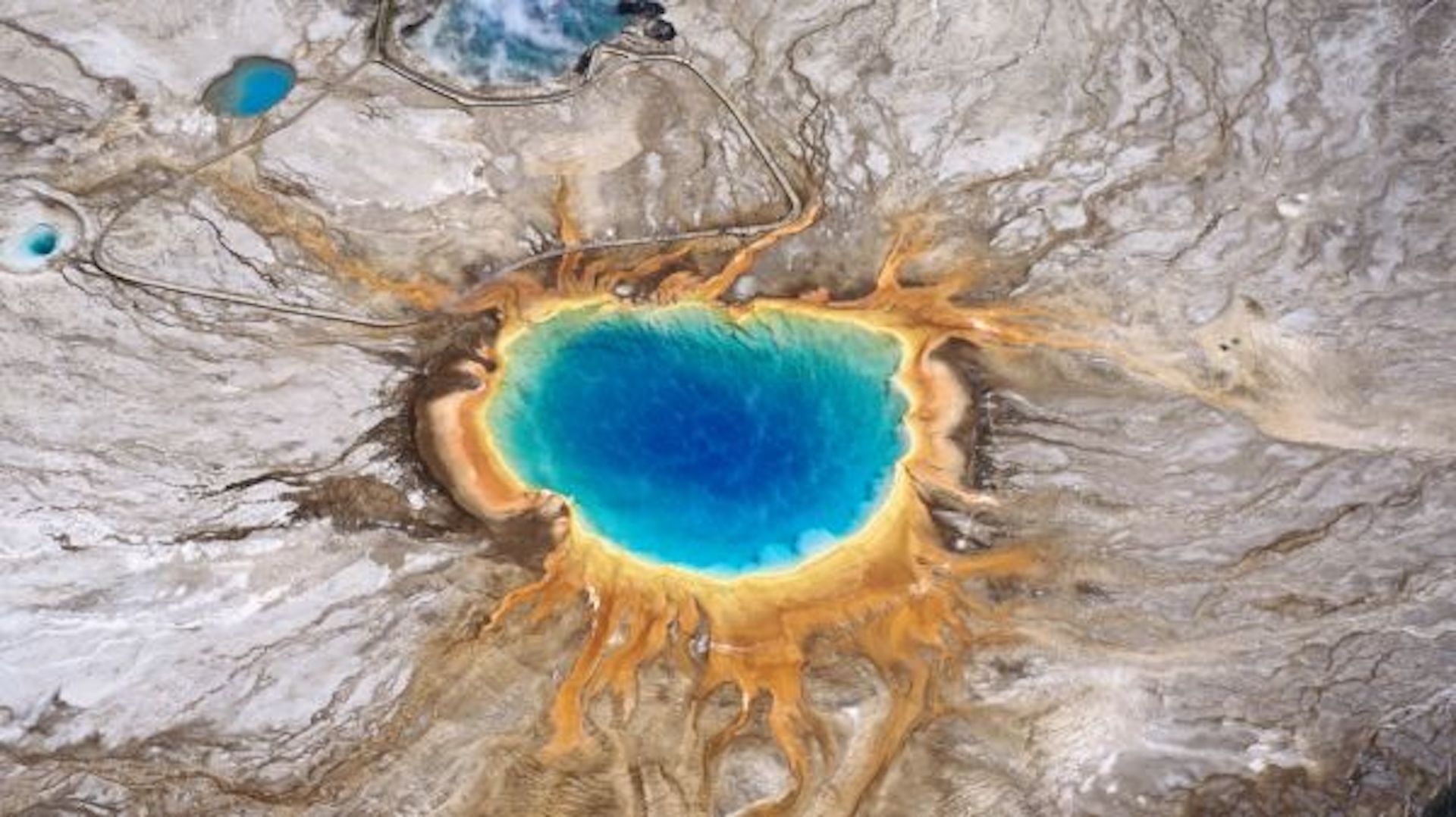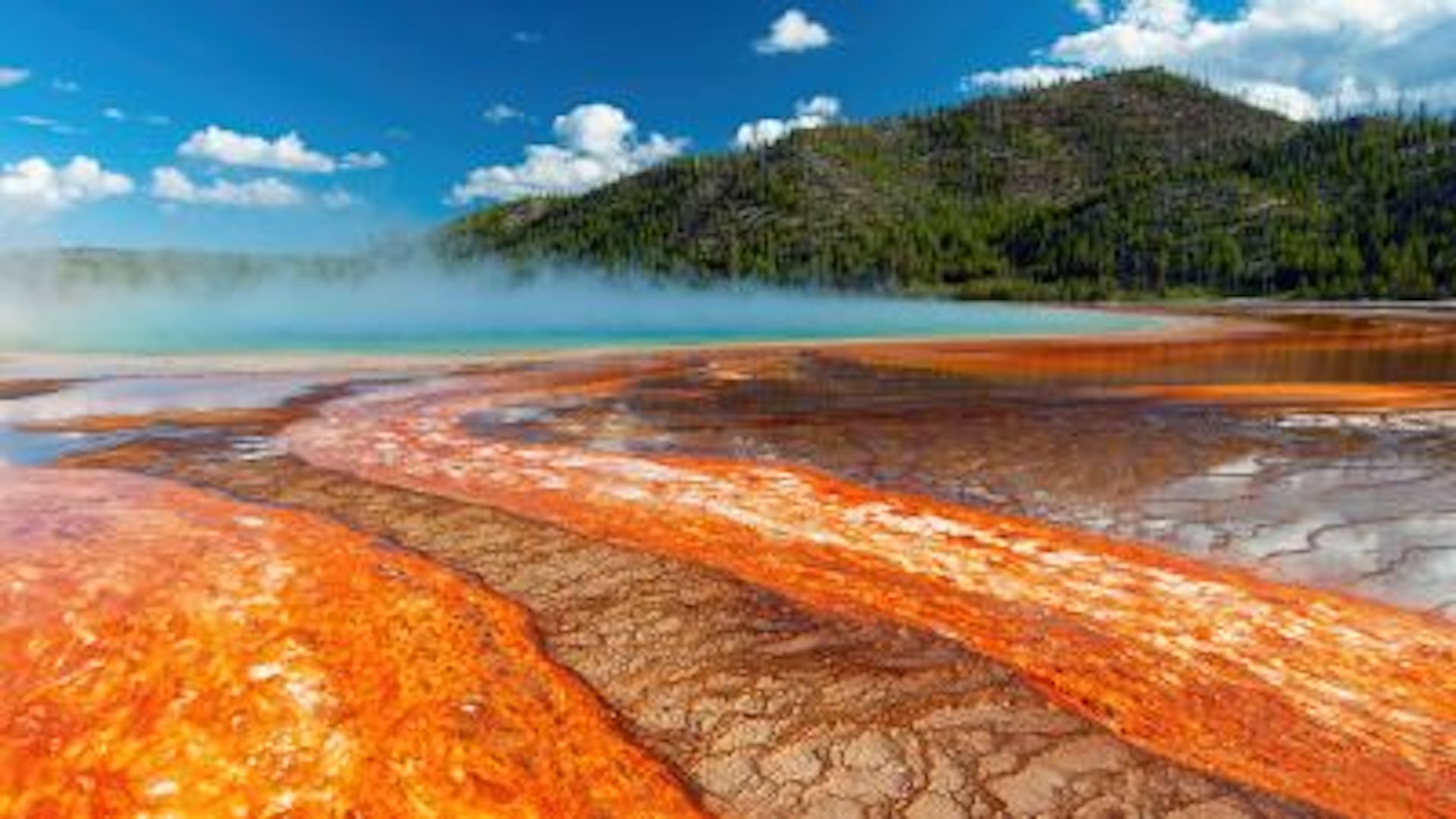Yellowstone volcano super-eruptions appear to have multiple explosive events
The last caldera-forming eruption at Yellowstone "was much more complex than previously thought," according to the annual report about activity at the supervolcano.

The last super-eruption at Yellowstone volcano, which occurred 631,000 years ago, was not one huge explosion. Instead, new research suggests it was a series of eruptions or multiple vents spewing volcanic material in rapid succession.
According to the U.S. Geological Survey's (USGS) Yellowstone Volcano Observatory 2022 Annual Report, published May 4, fieldwork over the past year has provided new geological evidence that "the formation of Yellowstone Caldera was much more complex than previously thought." A caldera is a large crater that forms after the collapse of a volcano following an eruption.
Yellowstone is one of the world's biggest volcanic systems. It sits above one of Earth's "hotspots" — areas in the mantle where hot plumes rise and form volcanoes on the crust above. It has produced three caldera-forming eruptions in the past 3 million years: the Huckleberry Ridge Tuff eruption, 2.1 million years ago; the Mesa Falls eruption, 1.3 million years ago; and the Lava Creek eruption, 631,000 years ago.
Related: Milky Way Shines Over Yellowstone Waterfall in Awesome Photo
What are super-eruptions?
The Huckleberry Ridge Tuff and Lava Creek events are considered super-eruptions because they expelled over 240 cubic miles (1,000 cubic kilometers) of material. The latter was responsible for the formation of the Yellowstone caldera. Mesa Falls erupted 67 cubic m (280 cubic km) of material, so — while still about 10 times bigger than the 1980 eruption of Mount St. Helens — is not considered a super-eruption.
Related: Where are most of Earth's volcanoes?
Previous research has shown that the Lava Creek super-eruption was not out of the blue; deposits at the Sour Creek Dome region east of the national park suggest that the giant blast was preceded by at least one eruption. Ignimbrite (volcanic rock formed via the deposits of the hot mix of material ejected during an eruption) found at the site had completely cooled before the main, mapped Lava Creek eruption took place.
Get the Space.com Newsletter
Breaking space news, the latest updates on rocket launches, skywatching events and more!

To better understand the timeline of the eruption, scientists spent 2022 remapping and collecting samples at Sour Creek Dome.
"It had always been known that there were at least two geological units [a volume of rock distinct from those surrounding it] from the eruption, and it was thought that there was little to no time gap between them," Michael Poland, scientist-in-charge at the Yellowstone Volcano Observatory, told Live Science in an email. "Now, we think there are more units. And we're just not sure what the time gap might have been, if any."
So far, the team has found four previously unrecognized ignimbrite units at Sour Creek, suggesting at least four eruptive pulses. They also found two structures that appear to be eruptive vents, which may have been the sources of these rocks.
"That could mean either several vents were active and/or there was time separation between the eruptions," Poland said. "But we don't yet have the data we need to answer those questions yet."
In 2020, scientists found the Huckleberry Ridge Tuff eruption — which ejected more than twice the amount of volcanic material as Lava Creek did — was also a phased event. Analysis of rocks at the site suggests there were three separate eruptions, with weeks to months between the first two, and years to decades between the second and third.
Yellowstone volcano is not expected to erupt anytime soon. However, the finding that the Lava Creek eruption may have followed a similar pattern to that of the Huckleberry Ridge Tuff eruption could give an idea of what to expect if and when Yellowstone does blow. "These major caldera-forming eruptions might not be single events at Yellowstone, but instead have multiple phases," Poland said.
Researchers at the volcano now plan to carry out detailed examinations of the newly discovered units and the boundaries between them. This will allow them to paint a more detailed picture of what the Lava Creek eruption looked like — and maybe even what triggered it.
Join our Space Forums to keep talking space on the latest missions, night sky and more! And if you have a news tip, correction or comment, let us know at: community@space.com.
Hannah Osborne is the Earth and Animal Editor at Live Science. Prior to Live Science, she worked for several years at Newsweek as the Science Editor.
-
Classical Motion That's interesting and different from past narratives. And modifies the danger. Have they checked the other calderas around the world? Maybe volcanic eruptions can modify the climate temporarily, but not to where we have mass die offs of species. Not as devastating in one event as imagined.Reply
What's that leave for mass extinctions? Asteroids? Do we have the knowledge and tech to avoid an asteroid?
Or an environmental tipping point? Do we have the knowledge and tech to avoid a tipping point? -
Atlan0001 In a series of CGI shows called 'Walking with Dinosaurs' there is a segment where there is a mass extinction due to low-level super volcanic eruptions, nothing like what is talked up. A super volcanic eruption doesn't have to be a naked singularity of explosion rivaling an asteroid strike. In the Pacific region of the Earth, we could be in the beginning, or more probably, in the middle a longer lasting low level of super volcanic eruption right now. A titanic eruption, or eruptions, just more horizontally widespread instead of more vertically orientated in less area, underneath the crust of the Earth that is shifting the magnetic poles of the Earth) we are hardly noticing except for the climate changes it may be causing on the levels of the Earth where we live.Reply
Each Ice Age of the last couple of million has been a crash, a falling over a cliff, so to speak, into one rather than anything like a long decline -- longer than a couple of hundred years -- to one. Ten to thirty thousand years of consistent warming, heating up! then bam! Ice Age. A relatively long-lasting buildup of a widespread low level super volcanic eruption, and/or one simply lifting in material and material heat over a large plain of substrata, could do that. It could be very periodic, especially if it is connected to some periodic activity of our star . . . that activity tied to some periodic activity even greater in our region of the galaxy we periodically travel through.
Of course, to some people tyrannically orientated in bent of mind -- and to too many gullible people -- the Earth has no untoward activity except as it is tied to activity of Mankind. That is a periodic belief, widely mindlessly savage and horrifying in its results, recorded throughout the recorded history of Mankind. -
Unclear Engineer Atlan0101, take a look at this paper: https://www.nature.com/articles/s43247-023-00765-xReply
You will see in the graphs that the onsets and progressions of ice ages are not all the same, but it looks like they can now be better predicted as to duration and built-up/decline timing. -
Atlan0001 Reply
Great on what. More than I've ever seen before. But still no grip on why. Possibility maybe. I give three possibles, including a combination. The article jump started my memory, plus remembering that I had thought of the possibility of the super-volcanic eruptions not being just an asteroid strike-like naked singularity of titanic explosion but longer lasting, wider a field, and more layered in rising and receding. Forces from underneath the surface crust and/or from outside the Earth.Unclear Engineer said:Atlan0101, take a look at this paper: https://www.nature.com/articles/s43247-023-00765-x
You will see in the graphs that the onsets and progressions of ice ages are not all the same, but it looks like they can now be better predicted as to duration and built-up/decline timing.
Thanks much for pointing me to the study. I'm always interested in the histories and the natures, the patterns and shapes of complexities. I hope it gets a wider reading.
Again, thanks. -
Classical Motion If I recall, the first mass extinction was well after first life occurred. For it to be volcanic, the earth would have needed to expel a lot of magma for a long period of time. So some kind of great geologic upset of something. Where did all that heat come from, and why did it take so long to come up. After millions of years of stability? For life to start and evolve? Fast plate movement?Reply
All of our theories are just inference. We can't even measure light, our greatest inference. Half of inference is assumption......anyhow.
And it seems to me that inference can easily become a fact. Way too easy.










